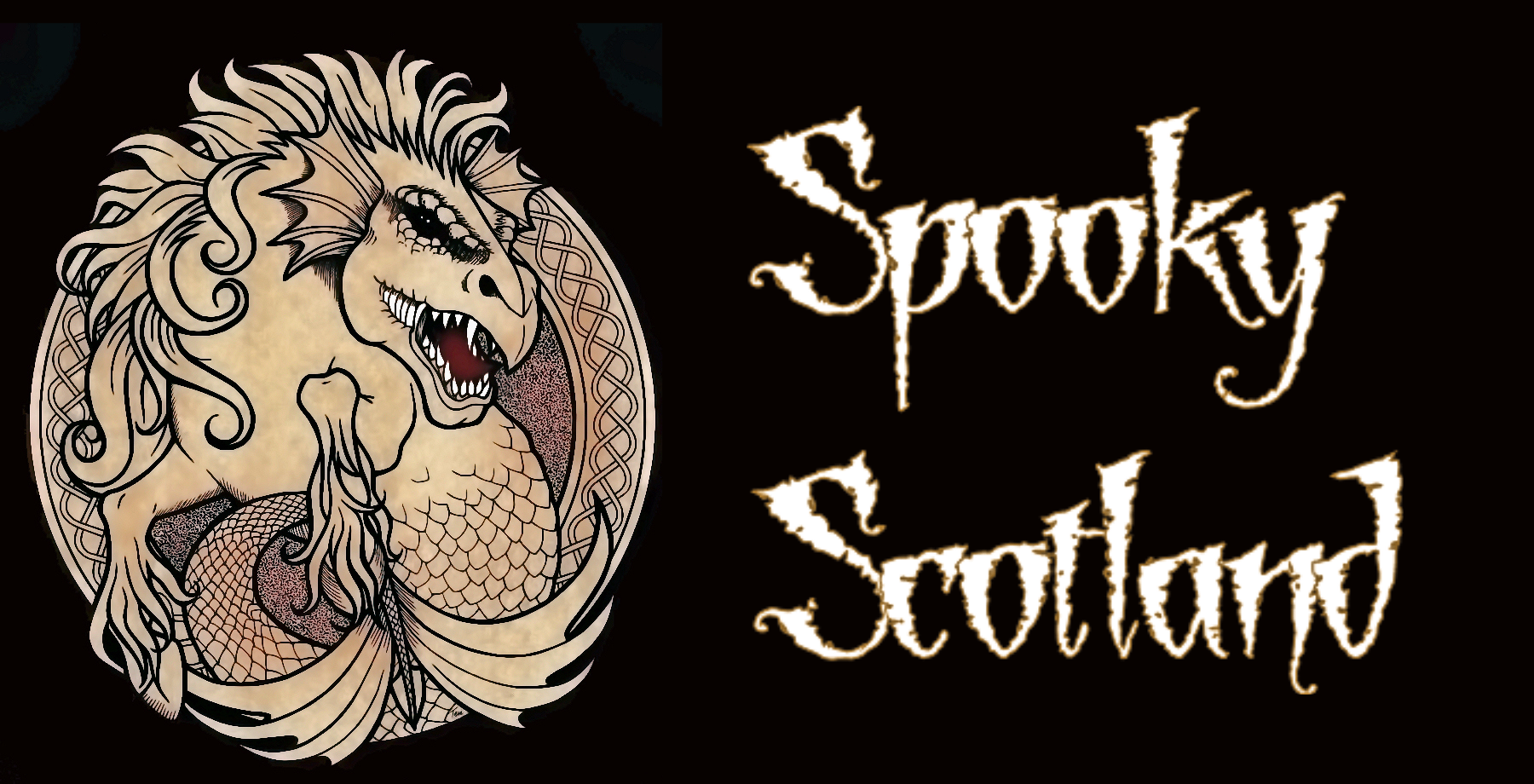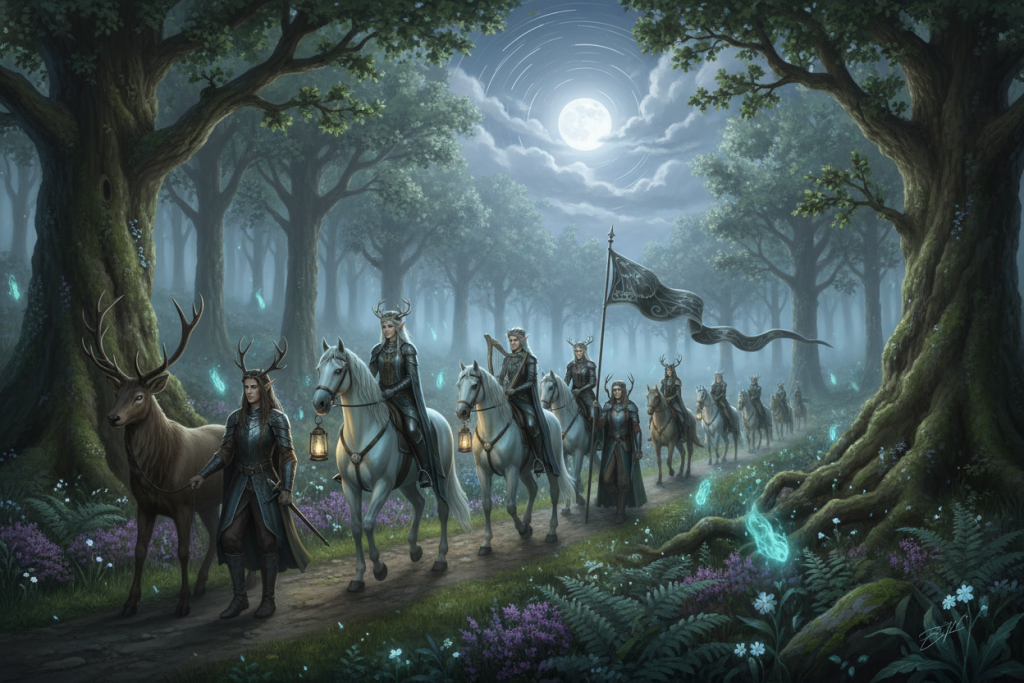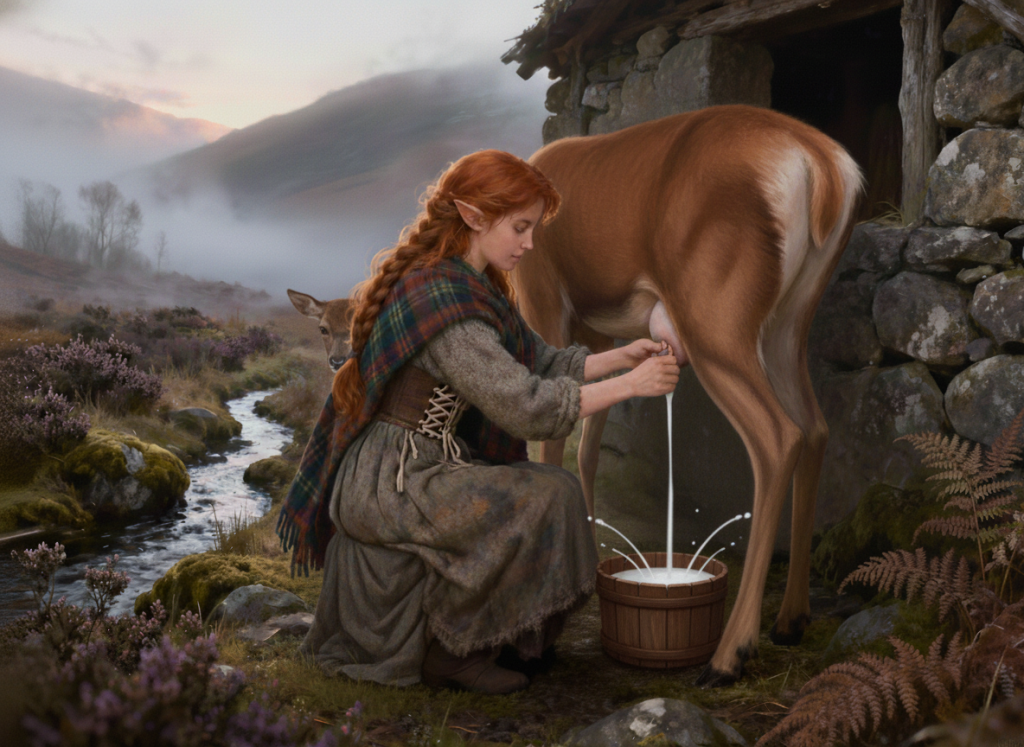Cardhu Distillery is just one of over fifty found in Moray. Many of Moray’s distilleries have their origins in illicit stills. Cardhu is no exception, but could it be a faerie-blessed whisky?
The tale begins on Moray’s old Manoch road. The Mannoch (Monk’s) Road, an ancient pilgrimage route stretching 12 miles from Knockando to Elgin, is steeped in history and folklore. This bleak path, once trodden by monks, drovers, and even whisky smugglers, holds tales far older than its Christian connections. Near Knockando Kirk, where the Mannoch Road meets Cottage Road, lies Knock an Rioch – the hill of the Druids – hinting at the area’s deep, pre-Christian spiritual significance.
The Shean o Mannoch and the Wee Folk
Just north of Mannoch Cottage, the road passes by the Shean o Mannoch, the largest of many “Faerie Knowes” found between Knockando and Dallas. These Sheans were believed to be home to the “wee folk,” or faeries.
It was here, on the slopes of Mannoch Hill, that John and Helen Cumming leased Cardhu Farm in 1811. Farming could be a tough job for tenant farmers, especially in Speyside. But one thing Speyside has in abundance is little ‘burns’ or streams filled with soft, peaty water. This is the perfect ingredient for ‘uisge beatha’- whisky- the water of life. The Laigh of Moray is also good ground from growing barley. Many farmers supplemented their earnings but setting up illicit whisky distilleries. The Cummings embraced the illicit trade, with one eye over their shoulder for fear of the waiting excisemen!
A Blizzard, a Knock, and a Blessing on Cardhu
One bitterly cold winter’s night, as a blizzard raged around Carn na Cailliche and the Mannoch Road, Helen was busy making whisky. A faint knocking at the door startled her. Warily, she opened it to find a miserable, tiny figure standing outside. She let the “wee mannie” in.
He crouched by the peat fire, his coarse woollen clothes steaming as the snow melted from his rabbit-fur boots and woollen bonnet. He drew tobacco from his coat, lit a clay pipe, and puffed contentedly, filling the cottage with a sweet aroma. After a few quiet minutes, he downed his whisky in one gulp. Then he threw the empty quaich into the fire and stood. With a cheery smile and a twinkle in his eyes, the fairy blessed Helen with these words:
“Brew wifie, brew! – for you and yours will never want!”
The unexpected guest then left, fading into the dense blizzard, heading towards the Shean.
Helen’s Resourcefulness and Cardhu’s Success
Scotland’s farming women were a tough breed. Was Helen naturally resourceful or was her practical nature the result of her faerie blessing? Known for her determination, she would often walk barefoot up the Mannoch Road to Elgin to sell their popular spirit, and also served travellers directly from her farmhouse window.
The authorities, however, took a dim view of this thriving illicit trade. John Cumming was convicted three times, but it was Helen who became legendary for her cunning in outwitting the local excisemen. On one occasion, when warned of their approach, she quickly hid her distilling apparatus, substituted bread-making materials, and smeared her arms with flour. When the knock came, she opened the door with a welcoming smile, declaring, “Come awa’ ben, I’m just baking.”
Tricking the Excisemen
Helen’s resourcefulness didn’t stop there. When excisemen were billeted at Cardow (Cardhu) Farm during their investigations, she would cook them a meal. While they ate, she would slip out the back door and raise a red flag, warning her neighbours that the authorities were in the area.
The excisemen eventually grew so frustrated by their lack of success that they offered Helen a bribe. Though she initially refused, she eventually agreed, telling them to return in a fortnight. In those two weeks, she shared her plan with everyone. She would lead the excisemen to a cave behind the “big black rock” (from which Cardow/Cardhu gets its name), where they would “discover” a still. This ‘still’ was cobbled together from old, worn-out still parts. Helen then split the bribe money with her neighbours, who used it to buy new, better equipment. Everyone, it seemed, was happy: the excisemen had their “evidence,” and the local distillers could continue their trade with upgraded gear.
From Illicit Stills to the Lasting Legacy of Cardhu
The fairy’s blessing proved true. As years passed, the Cumming family’s fortunes grew. When the 1823 Excise Act made legal distilling viable, they were among the first to obtain a licence. Helen’s daughter-in-law, Elizabeth Cumming, later modernised and expanded the distillery. Eventually, she sold it to John Walker & Sons in 1893, securing the family’s wealth and influence.
Today, Cardhu Distillery proudly stands as the “Speyside Home of Johnnie Walker,” renowned for the enduring legacy of its founding women. Yet, it is not the only distillery in Moray touched by faerie folklore.
In the visitor car park of Strathisla Distillery in Keith lies Fons Bulliens—the Bubbling Fountain—a well that provides the distillery’s water. Local lore tells that this spring is watched over by a faerie ring, suggesting that the Otherworldly folk, too, have a stake in the craft of whisky-making.
Just as the angel’s share refers to the portion of whisky that evaporates during maturation—said to be a gift to the heavens—perhaps it is not only the angels who partake. One might imagine the faerie folk delighting in their own share, hidden within the mists of Moray’s whisky tradition.




